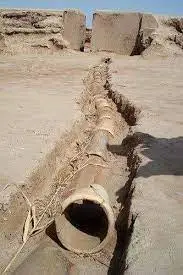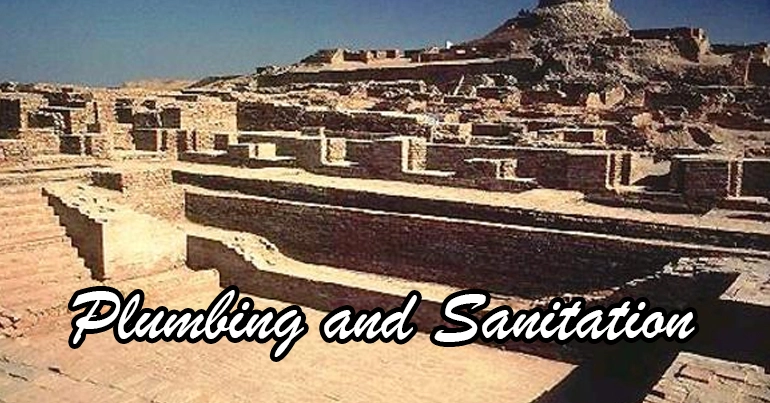Introduction:
The Indus Valley Civilization, one of the world’s oldest urban civilizations, displayed remarkable advancements in daily life. Among these, their innovations in plumbing and sanitation stand out as impressive feats of engineering and urban planning. This article explores how the Indus Valley people modernized their plumbing systems, their contributions to sanitation, and their early emphasis on personal hygiene.
Origins of Plumbing and Sanitation in the Indus Valley Civilization:
Around 3300 BCE, the Indus Valley Civilization began to flourish in what is now Pakistan and northwest India. This civilization, comprising major cities like Harappa and Mohenjo-Daro, showcased sophisticated urban planning, including plumbing and sanitation systems.
Innovations in Plumbing:
- Water Supply: The Indus Valley people understood the importance of a reliable water supply. They ingeniously tapped into nearby rivers, such as the Indus, for a steady water source. Additionally, they employed advanced techniques to dig wells for groundwater, providing water to the community.
- Indoor Plumbing: One of the most remarkable features of the civilization was the presence of indoor plumbing. Many houses had individual bathrooms with terracotta pipes connected to a central sewage system.
- Public Baths: The cities featured public baths that demonstrated a commitment to personal hygiene. These baths were supplied with a continuous flow of clean water, showcasing their understanding of cleanliness.
Innovations in Sanitation:
- Drainage Systems: The Indus Valley people designed a sophisticated drain network connecting houses to the main sewer lines. These drains ensured the efficient disposal of wastewater and minimized the risk of waterborne diseases.
- Sewage Systems: One of their most notable achievements was creating a centralized sewage system. This system collected wastewater and transported it away from the city, preventing contamination and odors.
- Waste Management: The cities also incorporated waste bins and containers, showing their dedication to waste management. It helped in keeping the streets and neighborhoods clean and free from litter.

Innovations and Early Focus on Personal Hygiene:
The emphasis on personal hygiene in the Indus Valley Civilization is evident in various aspects of their cities:
- Bathing Facilities: The presence of public baths highlights their dedication to cleanliness. These baths provided residents a place to bathe regularly, improving personal hygiene.
- Waste Disposal: Their efficient waste management systems prevented the accumulation of waste in living areas, ensuring a clean and hygienic environment.
- Toilets: The civilization boasted an early version of flush toilets connected to the drainage system. This innovation allowed for the swift and sanitary disposal of human waste.
Influential Figures and Community Efforts:
While it’s challenging to pinpoint specific individuals responsible for these innovations, it’s clear that the entire community played a part. These plumbing and sanitation advancements resulted from collective efforts and shared knowledge.
Legacy and Modern Parallels:
The innovations of the Indus Valley Civilization have left a lasting impact on modern plumbing and sanitation systems. The concepts of centralized sewage systems, indoor plumbing, and public baths have evolved and are now integral to modern urban planning and infrastructure.
In contemporary society, urban areas worldwide have adopted similar plumbing and sanitation principles, emphasizing the importance of clean water supply, efficient wastewater management, and personal hygiene. The Indus Valley Civilization’s contributions serve as a testament to the enduring importance of these principles in maintaining healthy and sustainable communities.
Conclusion:
The Indus Valley Civilization’s advancements in plumbing and sanitation systems are a testament to their ingenuity and commitment to well-being. Their innovative approach to water supply, indoor plumbing, drainage systems, sewage management, and personal hygiene laid the foundation for modern urban planning and sanitation. Today, their legacy continues to influence how we design and maintain our cities, emphasizing the vital role of clean water and sanitation in the health and prosperity of communities.














Leave a Reply